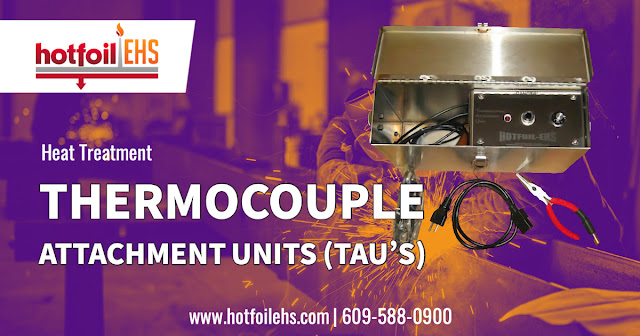Thermocouples play a crucial role in the heat treatment industry, particularly welding. A thermocouple is a type of sensor consisting of two different types of metal joined together at one end. When the joined end is heated or cooled, it creates a micro voltage correlated to the temperature.
The Thermocouple Attachment Unit (TAU) is a crucial device used to construct and apply these thermocouples to the workpieces or target pieces that will be welded.
Construction of Thermocouples:
- Preparation of Thermocouple Wire: The first step in constructing a thermocouple involves preparing the thermocouple wire. These wires are two different types of metal, with their choice depending on the temperature range and the environmental conditions of the process.
- Joining the Wires: The two thermocouple wires connect at one end by twisting the two wires together and then applying heat, generally through a method such as welding or brazing.
Application of Thermocouples to Welding Target Pieces:
- Location Selection: The thermocouples need to be attached strategically to effectively monitor the temperature of the workpiece during the welding process. These locations are generally where the thermal properties are most critical for the quality of the weld, such as the weld joint or near heat-affected zones.
- Attachment: The TAU is then used to attach the thermocouple to the selected location on the workpiece. The attachment is typically done by welding the bead of the thermocouple to the workpiece. The TAU can often control this process to ensure a good connection without damaging the thermocouple.
- Connection to Measurement Device: After attachment, the other end of the thermocouple is connected to a temperature measurement device or system. This device measures the thermocouple's voltage and translates it into a temperature reading.
During the welding process, the thermocouple provides real-time temperature data, helping to control the weld's heating and cooling rates, ensuring the weld reaches the appropriate temperatures without overheating or cooling too quickly, both of which can lead to weld defects. After the process, thermocouples can be removed or left in place, depending on the requirements.
Remember, the specific process can vary based on the type of TAU and the particular requirements of the welding operation. Always refer to the manufacturer's instructions when using a TAU.
https://hotfoilehs.com
609.588.0900
